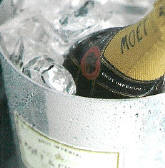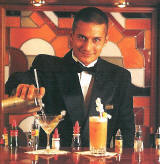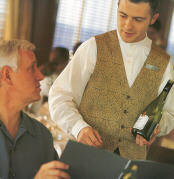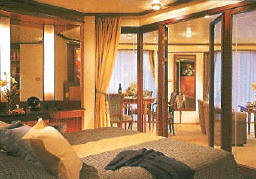|
Awaiting Your Return From Shore |
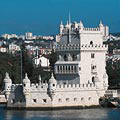 Known in Portugal as Lisboa, the city was inhabited by the Romans, the
Visigoths and, beginning in the eighth century, the Moors. Tragedy struck on
All Saintsí Day in 1755, with a devastating earthquake that killed about
40,000 people. As a result, the Baixa (lower city) emerged in a single phase
of building, carried out in less than a decade by the royal minister, the
Marques de Pombal. In the Belem suburb, which survived the destruction, and
the old Moorish section of the Alfama, sprawling below the castle of St.
George, there are still remains of pre-quake Lisbon.
Known in Portugal as Lisboa, the city was inhabited by the Romans, the
Visigoths and, beginning in the eighth century, the Moors. Tragedy struck on
All Saintsí Day in 1755, with a devastating earthquake that killed about
40,000 people. As a result, the Baixa (lower city) emerged in a single phase
of building, carried out in less than a decade by the royal minister, the
Marques de Pombal. In the Belem suburb, which survived the destruction, and
the old Moorish section of the Alfama, sprawling below the castle of St.
George, there are still remains of pre-quake Lisbon.
High above the Baixa is the Bairro Alto (upper city) with its
teeming nightlife. The easiest way to connect between the two areas is via
the public elevator built for the city by Gustave Eiffel.
|
Pier.
The Left of town is about 15 minutes away by car. Taxis are generally
available outside the terminal building. |
|
Shopping. Handicrafts, ceramics and
embroidered linens are popular buys. Look for gold filigree or silver
jewelry, knitwear, leather articles, wickerwork, wall tiles and items
made from cork. For everything under one roof, the modern Amoreiras
shopping complex features over 200 shops. Upscale shopping is in the
elegant downtown Chiado district. |
|
Cuisine. Meat lovers can find delicious
meat dishes, but it is the freshly caught seafood that really highlights
local cuisine. Seafood restaurants display prawns, crabs, oysters,
mussels and fish in refrigerated showcases. |
The Gulbenkian Museum. This renowned museum is the cultural Left
of Portugal. Its excellent collections of Persian, Egyptian and modern
art were acquired by just one man, Armenian oil magnate Calouste
Gulbenkian. Housed in a superb complex, this museum should not be
missed.
Golf. Belas Country
Club. Spreading among the hills, Belas Country Club provides an
excellent view over the Sintra Mountain range. |
|
Awaiting Your Return
From Shore |


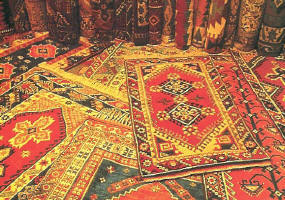
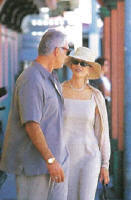
 Known in Portugal as Lisboa, the city was inhabited by the Romans, the
Visigoths and, beginning in the eighth century, the Moors. Tragedy struck on
All Saintsí Day in 1755, with a devastating earthquake that killed about
40,000 people. As a result, the Baixa (lower city) emerged in a single phase
of building, carried out in less than a decade by the royal minister, the
Marques de Pombal. In the Belem suburb, which survived the destruction, and
the old Moorish section of the Alfama, sprawling below the castle of St.
George, there are still remains of pre-quake Lisbon.
Known in Portugal as Lisboa, the city was inhabited by the Romans, the
Visigoths and, beginning in the eighth century, the Moors. Tragedy struck on
All Saintsí Day in 1755, with a devastating earthquake that killed about
40,000 people. As a result, the Baixa (lower city) emerged in a single phase
of building, carried out in less than a decade by the royal minister, the
Marques de Pombal. In the Belem suburb, which survived the destruction, and
the old Moorish section of the Alfama, sprawling below the castle of St.
George, there are still remains of pre-quake Lisbon. 

